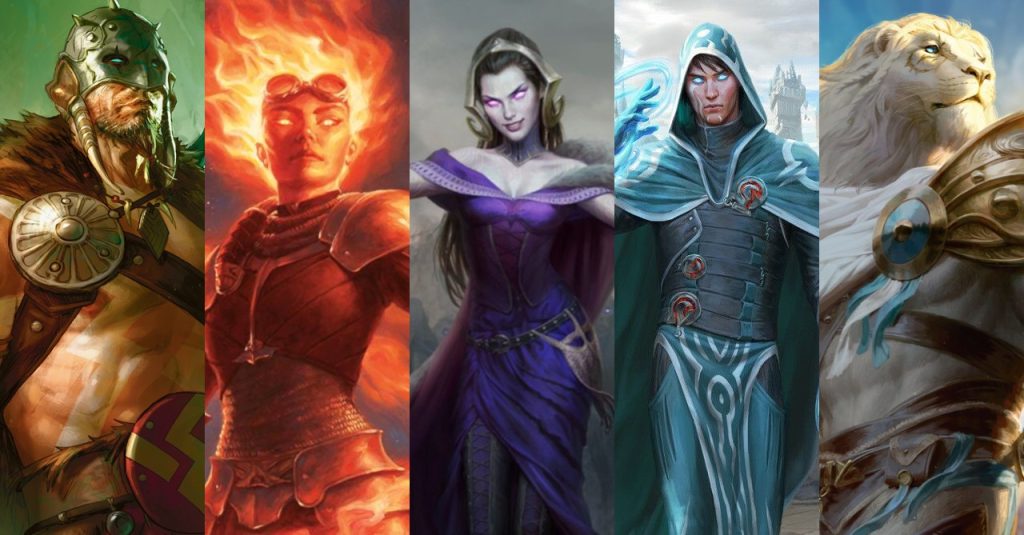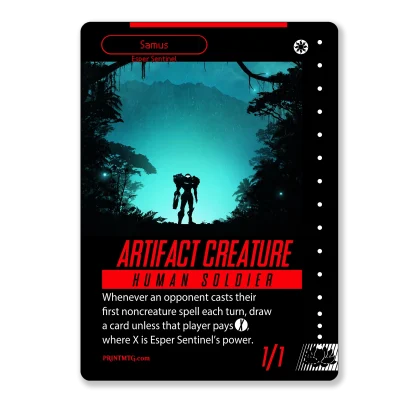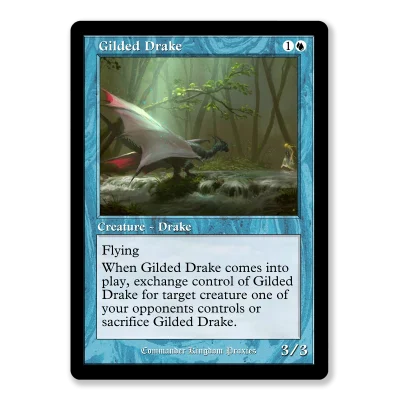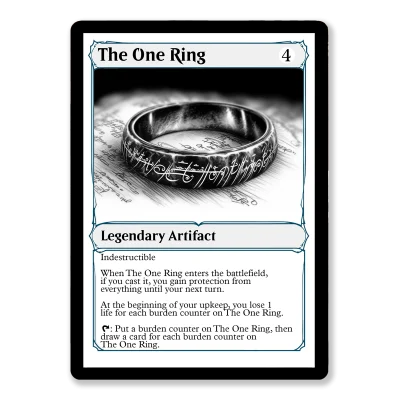Magic The Gathering’s defining feature is the five colors at the center of the game: white, blue, black, red, and green. Almost every card is categorized under these five colors, each with its own mechanics and philosophy.
Magic’s color themes impact much more than just the art or style of a card. Knowing what each of the colors represents can greatly aid in deckbuilding and in understanding your opponent’s strategies; after all, a mono-blue player isn’t likely to be running a life-gain-focused deck.
This guide will explore the five basic colors of Magic, primarily in isolation from each other. While they do sometimes mingle and bleed into one another, each has its own very important role to play in Magic’s design.
Blue
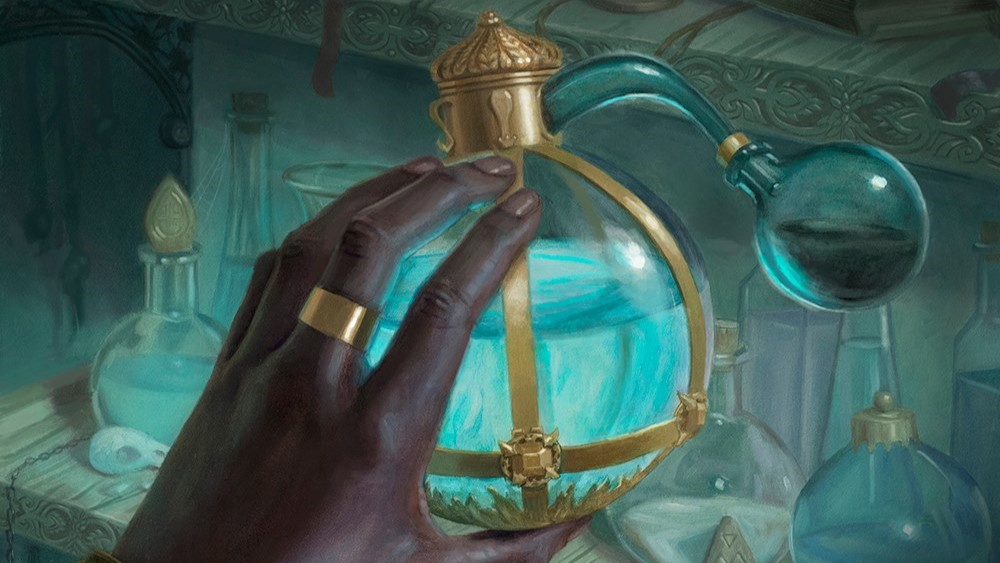
Blue is all about “perfection through knowledge”. It’s neither good nor bad, lawful nor chaotic; blue seeks to gain more knowledge in any way it can.
As opposed to red’s impulsive, rebellious approach to the rules, blue simply doesn’t consider limitations or rules a concern if they’re getting in the way of a bigger, grander goal. This is why blue is the main color for card draw – gaining more cards, more understanding, and more options with little drawback is an incredibly powerful ability that is core to blue’s identity.
Like white, blue is very sure in how it wants the world. Unlike white, though, a blue player is more about bending the world to their own design, rather than conforming to what is strictly ‘fair’. Whether it be counter spells, changing or bouncing other players’ permanents, or even just forcing opponents to ‘forget’ all they know by discarding their entire deck, blue challenges white’s rigidity with an on-the-fly, very fluid approach to board management.
Though blue is concerned with knowledge and perfection, that doesn’t always have to necessarily mean in an academic sense. For example, the planeswalker Niko Aris is based in blue because they have spent so long pursuing athletic perfection.
You also tend to find a lot of sea creatures in this color. Though it’s mainly a way to ensure blue has a few big creatures of its own, there is also a metaphorical aspect to it, as the ocean in Magic often represents the unknowable and unattainable – something blue cares about very much.
Black
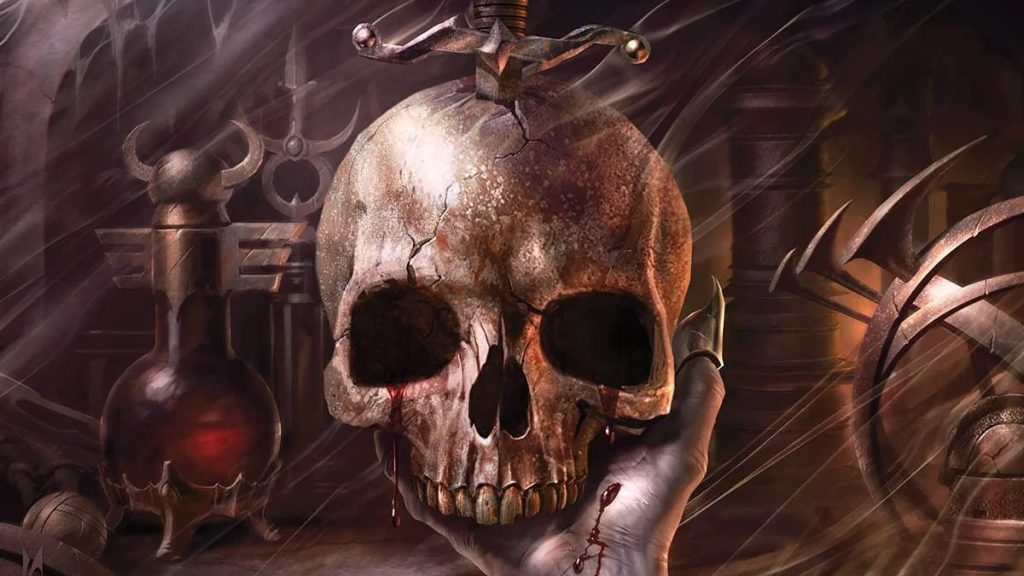
Power at any cost is black’s core theme. Opportunistic and self-serving, its main concern is “power through ruthlessness”.
Black is the color most likely to make sacrifices to get the upper hand. Most commonly, this is through either sacrificing their own creatures (such as with a Viscera Seer to scry) or using their own life with cards like Vampiric Tutor. In exchange for these downsides, black is a bit more flexible than most other colors, being able to do a bit of everything, as long as it’s willing to pay the price.
Black can sometimes be spiteful, too. Other people having strength is a direct threat to black, and so it is the best color for destroying other players’ creatures or forcing them to discard cards.
Because black is so obsessed with gaining its own power, it struggles with anything it can’t manipulate or corrupt. Artifacts and enchantments are a big, big weak point for the color, as their lifeless, insentient natures protect them from black’s schemes. On the other hand, it is an excellent color for killing creatures, and has lots of board wipes and removal effects to deal with anything living.
Like white, it’s important not to confuse black with being evil. While it is self-serving and ruthless, the goals it pursues don’t have to be malicious. Liberty and freedom to act however you like is core to black’s identity, whether that comes out as a tyrannical demon fueled by war like Ob Nixalis, or a vampire who is protective of his home, like Sorin Markov.
Red

Red is impulsive and emotional. The color of passion, frivolity, and chaos, it’s the color most focused on “freedom through action”.
While red is happy to burn itself for a leg up, like black, it’s much more in the moment, and very rarely looks ahead further than a single turn. It wants to experience all the things, and it wants to experience them now. This is best shown in red’s impulsive draw mechanics, which make extra cards available to you, but only for a limited amount of time, and in rummaging and looting effects, which both force you to discard a card to draw a card.
Red is fine with making smaller amounts of progress if it can do them quickly. It likes direct-damage burn spells like Shock or Lightning Bolt, and has lots of cheaper creatures with haste who can start swinging as soon as they’re cast. It’s also more recently become a color that really enjoys making single-use mana artifacts, like Treasure or Gold tokens.
Though quick, red has a tendency to run out of steam even quicker. If an opponent isn’t defeated in the first few turns of a game, it can struggle to keep the pressure up in the long term. Its passion can also massively backfire on them, with lots of red cards focused on chaotic, random-chance outcomes, such as Chaos Warp or Warp World shaking up the game beyond what any player could reasonably predict.
That doesn’t mean red can’t have some big, late-game plays, though. Red’s most well-known creature type are the dragons, who are expensive and volatile, but can also deal massive amounts of damage. A great example is the Scourge of the Throne, a dragon that gives an additional combat phase when it deals damage to the player with the most life. It’s one of a number of red cards that grant a player extra combat phases, to ensure their creatures can swing and attack as much as possible.
Green
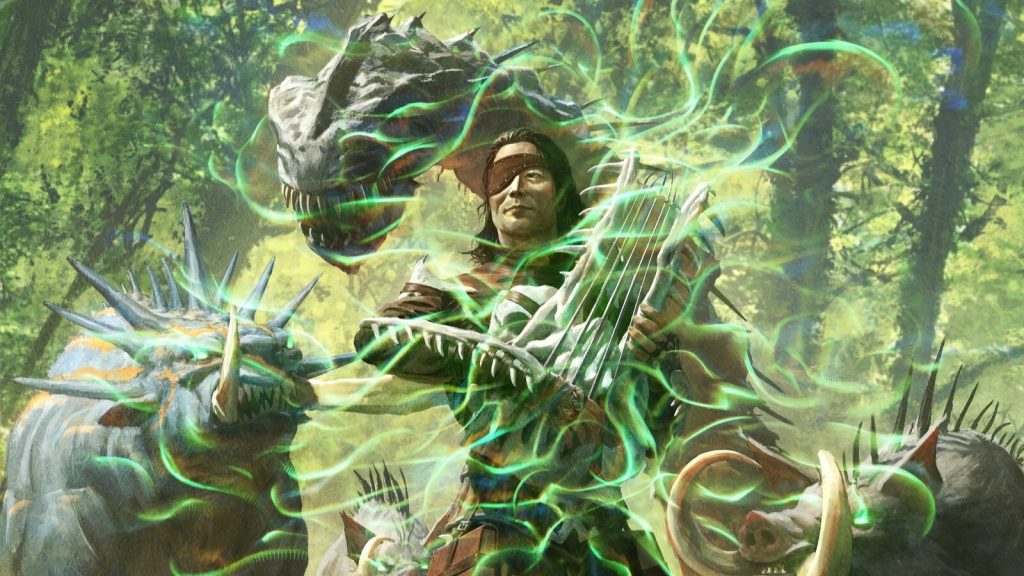
Growth, strength, and sturdiness are all central to green’s identity. Defined as “growth through acceptance”, it’s a color that likes to make slower, but more stable improvements over black or red’s fast and costly advantages.
As you’d expect, green is the color of nature, and it can pull lands out of a deck better than any other. All the best ramp spells in the game are green: Cultivate, Rampant Growth, and Migration Path among them. It can deal with unnatural artifacts and enchantments incredibly well, through cards like Return to Nature or Reclamation Sage.
Like white, green cares about community, though green’s ideal is more based on the natural order of things than any organized society. It’s great at producing creature tokens, and is also defined by its larger, ‘stompier’ creatures. +1/+1 counters are also a core theme of green, as they represent the constant growth of nature.
In combat, trample is central to green, letting those big creatures ignore any petty defenses an opponent might put up. Nature is nurturing and communal, but it’s also uncaring in the face of anything that tries to stand in its way.
A downside to green is that it has a very narrow-minded approach. Nature is seen as the perfect system, and so it has little time for anything that isn’t about raising creatures and smashing them against an opponent. That means it is incredibly vulnerable if anything stops the game plan, like a board wipe or an even bigger creature standing in its way.
White
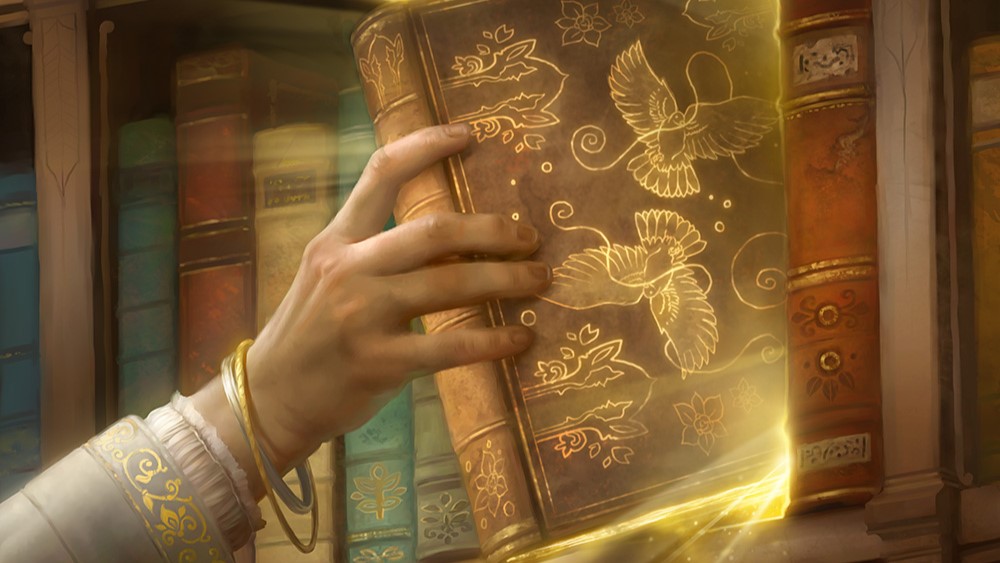
White cards seek “peace through structure.” As the color of morality, order, and hierarchy, white cards often depict how creatures come together, whether that be in communities, religions, or even militaries. Protecting and serving the ‘common good’ is white’s most significant goal, and it accomplishes this mechanically through effects like life gain, protection, and phasing.
However, it’s important not to mistake white’s morality as being inherently good. White cares about the group, not the individual, which is why it’s one of the best colors at producing numerous, small, disposable creature tokens. When taken to the extreme, white can even become fanatical or downright fascist in its approach; it’s the color of removal, with lots of powerful exiling spells and board wipes in its arsenal.
White is also the color of ‘rules setting’, and it attempts to limit how much other colors can flex with the ‘fairness’ of a game. For example, taxing effects like Smothering Tithe and Monologue Tax are white, and it tends to limit its own card draw capabilities to ways that benefit other players too, such as Secret Rendezvous.
What About Colorless?
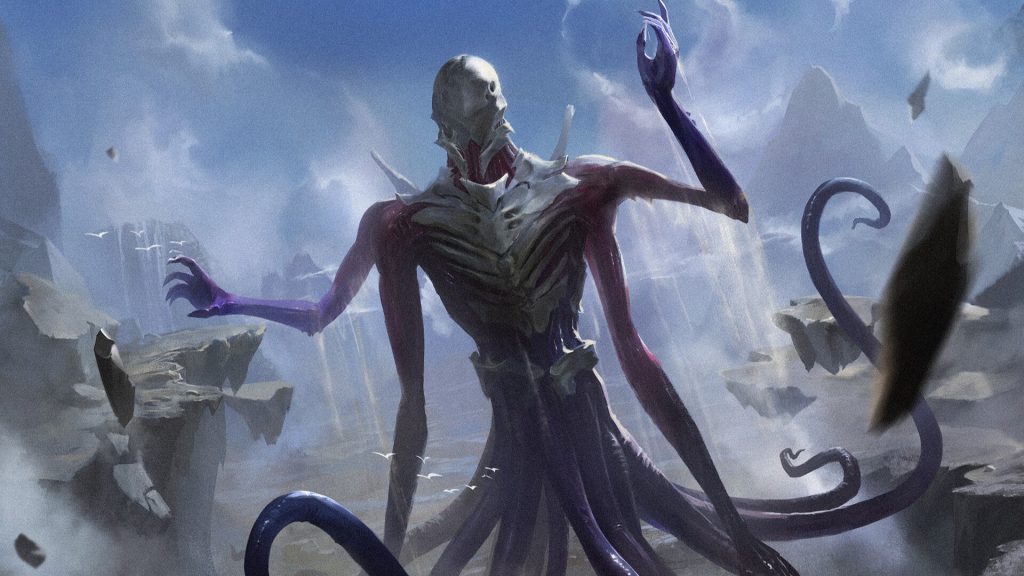
Colorless, which some players refer to as Magic’s sixth color, lacks the same identity or philosophies as white, blue, black, red, and green. However, it does have a theme. Colorless cards tend to reflect one of three things: the artificial, the unknowable, and the underdeveloped.
Colorless artifacts are incredibly common. These inventions, contraptions, and tools can slot into most decks without issue, as tools are only as good as the person using them. Artifact tokens, such as treasures, food, gold, or clue tokens, are colorless as well, as they’re simply objects found in the game’s world. Artificial beings, like the Planeswalker Karn, are based in colorless mana too, though may be able to develop into one of the other five colors at a later time.
Creatures outside of our understanding are often represented as being colorless. The Eldrazi, which exist outside of the Magic multiverse and are the closest parallel the game has to Cthulhu, are all colorless. The block of sets they most appeared in, Battle for Zendikar, even had a colorless-matters theme and introduced Wastes, a colorless basic land. You could also put the colorless dragon planeswalker Ugin into this category, as he is an immensely powerful and inscrutable being of untold power.
Finally, a more recent development is to use colorless cards to represent those who haven’t yet developed into one of the other colors. In Ravnica, the guildless (those who don’t belong to one of the ten-color guilds) have Guildless Commons, a land that produces two colorless mana. In Strixhaven: School of Mages, students don’t decide on which of the five two-colored colleges they want to join until their second year, after they’ve completed a series of lessons represented through colorless sorcery cards.
Two Color Combos in Magic: the Gathering
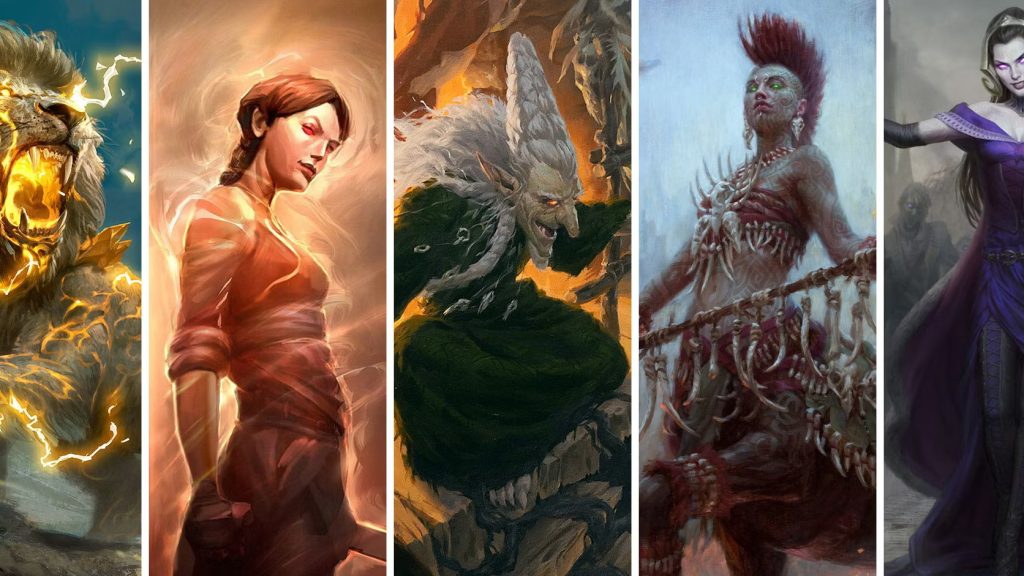
In Magic: The Gathering (MTG), two-color combinations are central to deck-building strategies, with each combination representing unique synergies and playstyles. These combinations are often referred to by names associated with the Ravnica guilds, reflecting the blend of philosophies and mechanics of the colors involved. Here’s an overview of each two-color combination and their general themes:
- Azorius (Blue/White): Known for law, order, and control, Azorius decks focus on delaying opponents and establishing a controlled board state to secure victory.
- Boros (Red/White): This combination emphasizes aggression and combat, using both colors’ strengths in mobilizing quick attacks and enforcing strict battlefield control.
- Dimir (Black/Blue): Focused on secrecy and manipulation, Dimir decks excel in information control, hand disruption, and subtle but powerful plays.
- Golgari (Black/Green): Symbolizing the cycle of life and death, Golgari combines green’s growth and black’s decay, leveraging the graveyard as a resource.
- Gruul (Green/Red): Gruul embodies raw power and freedom, focusing on overwhelming opponents with massive creatures and direct damage.
- Izzet (Blue/Red): The epitome of creativity and invention, Izzet decks use a combination of spells, counters, and effects to outmaneuver opponents.
- Orzhov (Black/White): Representing the duality of structure and ambition, Orzhov strategies often involve life manipulation and control through taxation and attrition.
- Rakdos (Black/Red): Thriving on chaos and destruction, Rakdos decks unleash a relentless assault, sacrificing stability for potent, often reckless, effects.
- Selesnya (Green/White): Focused on community and growth, Selesnya decks build their strength through creature tokens and collective buffs to overwhelm opponents.
- Simic (Blue/Green): Highlighting evolution and adaptation, Simic combines blue’s cunning and green’s natural force to outgrow and outsmart opponents.
Each of these combinations offers a distinct approach to the game, allowing players to explore a wide range of strategies based on their preferred playstyle.

